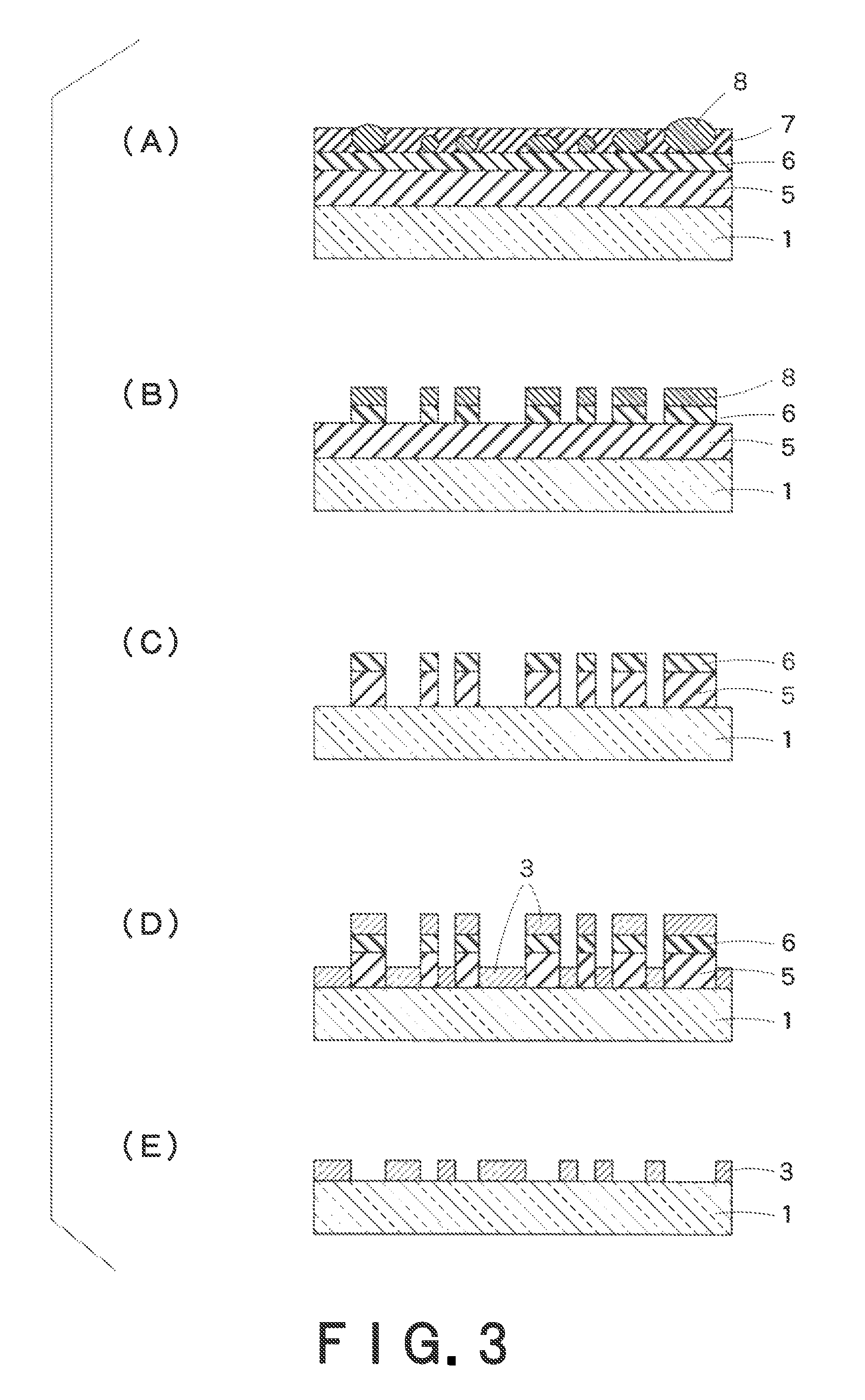Light-transmitting metal electrode having hyperfine structure and process for preparation thereof
a metal electrode and hyperfine structure technology, applied in the direction of electric discharge tube/lamp manufacture, conductive layer on insulating support, instruments, etc., can solve the problems of insufficient light-transmittance, incongruity of light-transmittance and light-transmittance reduction, etc., to achieve not particularly restricted opening shape
- Summary
- Abstract
- Description
- Claims
- Application Information
AI Technical Summary
Benefits of technology
Problems solved by technology
Method used
Image
Examples
example 1
[0088]First, a visible light-transmitting metal electrode was produced.
[0089]The inventors have found a method to obtain a block-copolymer in the phase-separated form of a dot pattern having a period of 50 to 70 nm. The aligned dot pattern is transferred to the substrate by the process described below. A metal electrode is deposited onto the transferred structure, and then the area of the transferred structure is removed to obtain a light-transmitting metal electrode. The process is as follows.
[0090]A thermosetting resist (THMR IP3250 [trademark], manufactured by Tokyo Ohka Kogyou Co., Ltd.) was diluted with ethyl lactate by 1:3. The solution was spin-coated at 2000 rpm for 30 seconds on a 4-inch amorphous quartz wafer (Photomask Substrate AQ [trademark], manufactured by Asahi Glass Co., Ltd.), and then heated on a hot-plate at 110° C. for 90 seconds, and further heated at 250° C. for 1 hour in an oxidation-free inert oven under nitrogen gas-atmosphere to perform a thermosetting rea...
example 2
[0099]Secondly, another light-transmitting ssion metal electrode was produced. The openings of the produced electrode occupied areas in a smaller ratio than those in Example 1 The light-transmitting metal electrode comprising openings in smaller area can be produced if the block polymer in Example 1 is etched for a longer time. The process for preparation of the light-transmitting metal electrode having that structure is described below in detail.
[0100]A thermosetting resist (THMR IP3250 [trademark], manufactured by Tokyo Ohka Kogyou Co., Ltd.) was diluted with ethyl lactate by 1:3. The solution was spin-coated at 2000 rpm for 30 seconds on a 4-inch amorphous quartz wafer (Photomask Substrate AQ [trademark], manufactured by Asahi Glass Co., Ltd.), and then heated on a hot-plate at 110° C. for 90 seconds, and further heated at 250° C. for 1 hour in an oxidation-free inert oven under nitrogen gas-atmosphere to perform a thermosetting reaction. The layer thus formed had a thickness of ...
PUM
| Property | Measurement | Unit |
|---|---|---|
| thickness | aaaaa | aaaaa |
| thickness | aaaaa | aaaaa |
| diameter | aaaaa | aaaaa |
Abstract
Description
Claims
Application Information
 Login to View More
Login to View More - R&D
- Intellectual Property
- Life Sciences
- Materials
- Tech Scout
- Unparalleled Data Quality
- Higher Quality Content
- 60% Fewer Hallucinations
Browse by: Latest US Patents, China's latest patents, Technical Efficacy Thesaurus, Application Domain, Technology Topic, Popular Technical Reports.
© 2025 PatSnap. All rights reserved.Legal|Privacy policy|Modern Slavery Act Transparency Statement|Sitemap|About US| Contact US: help@patsnap.com



